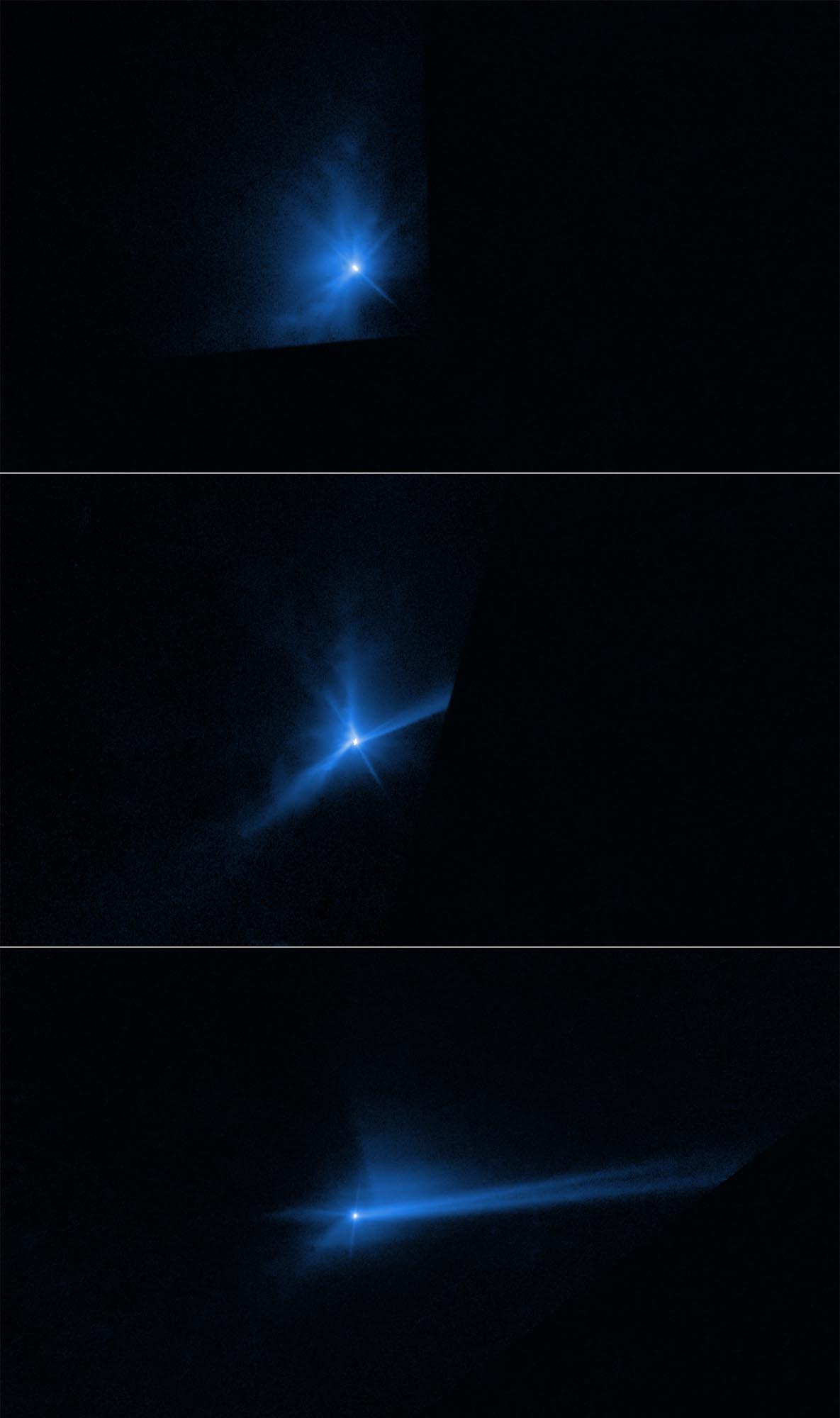STScI: Didymos-Dimorphos System After DART Impact

Like a sports photographer at an auto-racing event, NASA’s Hubble Space Telescope captured a series of photos of asteroid Dimorphos when it was deliberately hit by a 1,200-pound NASA spacecraft called DART on September 26, 2022.
The primary objective of DART, which stands for Double Asteroid Redirection Test, was to test our ability to alter the asteroid’s trajectory as it orbits its larger companion asteroid, Didymos. Though neither Didymos nor Dimorphos poses any threat to Earth, data from the mission will help inform researchers how to potentially divert an asteroid’s path away from Earth, if ever necessary. The DART experiment also provided fresh insights into planetary collisions that may have been common in the early solar system.
Hubble’s time-lapse movie of the aftermath of DART’s collision reveals surprising and remarkable, hour-by-hour changes as dust and chunks of debris were flung into space. Smashing head on into the asteroid at 13,000 miles per hour, the DART impactor blasted over 1,000 tons of dust and rock off of the asteroid.
The Hubble movie offers invaluable new clues into how the debris was dispersed into a complex pattern in the days following the impact. This was over a volume of space much larger than could be recorded by the LICIACube cubesat, which flew past the binary asteroid minutes after DART’s impact.
“The DART impact happened in a binary asteroid system. We’ve never witnessed an object collide with an asteroid in a binary asteroid system before in real time, and it’s really surprising. I think it’s fantastic. Too much stuff is going on here. It’s going to take some time to figure out,” said Jian-Yang Li of the Planetary Science Institute in Tucson, Arizona. The study, led by Li along with 63 other DART team members, was published on March 1 in the journal Nature.
